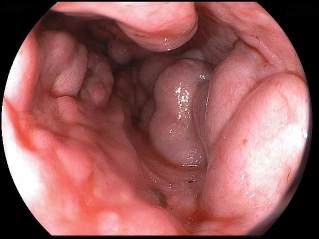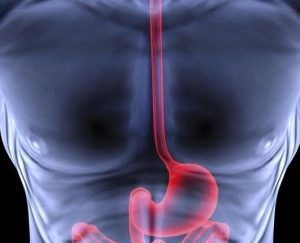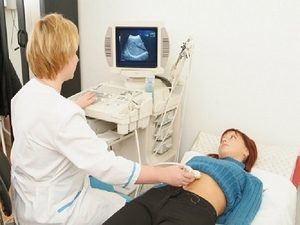Pathological condition in which there is enlargement of the blood vessels in the lower department of the tube of the esophagus or in the stomach area, adjacent to it, are called varicose veins of the esophagus, the symptoms of which will be discussed in detail in this article.

Develops a disease due to an increase in pressure in the portal vein, reducing the outflow of blood. Such a state is called in the course of chronic hepatitis, cirrhosis of the liver. Going to change the structure of the blood vessels. On their walls the various forms of extrusion, and alone shell of the capillary tapers.
Blood vessels have a winding form, a mucous membrane hyperemic and has a delay. This has resulted in a massive hemorrhage, who has no previous symptomatology.
Pathology has a code according to ICD 185, which is defined as the varicose veins of the esophagus, 185 (9) without bleeding, 185 (0) with bleeding.
What it is
Persistent hypertension (high blood pressure) in the portal vein in 2-4 times more norms leads to disease of the esophagus. A further increase in pressure (24 – 27 waters.art) leads to the rupture of blood vessels and the development of bleeding.
The pressure in the portal vein leads to a reduction of the outflow of blood, the deformation of the vessels, their extension and thinning of the wall. On the walls of the vessels are formed of the extrusion, where they meet the blood. When an increase in pressure increases the load on the wall of the capillary and it can tear.
When pathologies of the cardiac system varices has a smaller footprint and localized over the entire surface of the tube of the esophagus. If the extension is called the pathological processes occurring in the liver, then the blood vessels are more extended, and the scares in the lower part of the esophagus.
Complications in form of bleeding does not depend on the size of the varicose node, or on the condition of the vascular walls, and from the jump of the pressure in the portal vein.
His provoke:
- overeating;
- strong physical stress;
- an increase in intra-abdominal pressure.
Sometimes the bleeding is manifested during sleep. There are factors aggravating the condition: failure of the cardia, as well as reduce blood clotting. That is, what are dangerous varicose dilated veins of the esophagus.
In diseases of the varicose veins of the esophagus icd 10 code should know the doctor.
Varicose veins of the esophagus: causes
The reasons for its development are the pathological processes that lead to hypertension in the portal vein. It:
- parenchymal disease of the liver caused by cirrhosis, tumors, amyloidosis;
- stenosis of the portal vein (thrombosis, squeezing from the outside, sclerosis);
- chronic failure of the cardiovascular system.
People in the risk group, which can occur varicose the esophagus, include:
- >persons older than 50 years (more often men);
- patients who have chronic pathology of the CVS and the digestive system;
- patients cirrhosis of the liver.
Most dilated veins in the esophagus develops in the setting of cirrhosis and chronic hepatitis. When alcohol abuse happens, changes to the structure of the parenchyma. There is a form of scarring that violate the normal blood circulation, slow down the him, which leads to stagnation of blood and formation of varicose blood vessels.
Phase of the disease
Issue the congenital form, which is observed in newborns. But this pathology occurs rarely and is accompanied by severe disorders. The development of the disorders causes the hereditary factor and during pregnancy. The obtained shape is observed in men, ascended the 50-year-old abroad and have bad habits.
On the degree of damage to the blood vessels emit four types of the disease:
1 phase. This is the initial stage in which the varicose knots in an amount of not more than 3 mm and are intended only in the endoscopic study. In the implementation of x-ray with contrast it is to see the slow circulation of the blood, but the bleeding no. In this esophagus the hole smaller "shocks".

2 phase. In this stage the lumen of the blood vessel is not broken and varicose veins is not increased, but the veins receive the winding structure. The diagnosis is confirmed using contrast x-rays, on which they are visible is not clear the contours of the blood vessels and the rounded protrusion. Bleeding is not.
3 phase. It is observed the steady enlargement of certain parts of the blood vessels, the lumen of the vein is narrowed. Clearly visible varicose nodes, change of the mucous shell (thinning). This phase is characterised by a high risk of bleeding.
On the radiology image is seen training on the mucous membrane of the esophagus in the form of polyps, as well as a sharp perforation of the mucous membrane. The condition is assessed as severe and requires immediate hospitalization.
4 phase. There is a strong thinning of the mucous membrane of the blood vessels, training for her polyps. Varicose nodes of the esophagus at this stage are in the form of grapes and greatly prefer the lumen of the esophagus. When the progression of the disease can enclose it completely. In this period, the patient developed redness of the mucous membranes, the education of erosive defects. Such a condition is evaluated as critical, because it causes frequent and massive bleeding.
Varicose veins of the esophagus: symptoms
The beginning of the disease does not manifest itself. Therefore, patients seek treatment when the disease is already "gained momentum". Themselves to recognize the disease, it is impossible, because the initial manifestations of the disease are similar to symptoms of disorders of the digestive system. So, if it is available, enlargement of the veins of the esophagus, the symptoms will be the following:
- the emergence of shortness of breath;
- the availability of heartburn (does not depend on food intake);
- soreness in the area of the xiphoid intestine;
- violation of swallowing.
If he has varicose veins of the esophagus and the stomach, its main symptom — the vascular drawing on the skin of the anterior abdominal wall, in the form of "head of medusa". It consists of the pathologically changed veins. This symptom occurs already in the later period of the occurrence of the disease. Later, at the occurrence of bleeding in a patient present:
- bloody vomiting;
- blood in the stool;
- tachycardia;
- hypotension (a sudden drop in AD);
- shock.
Diagnosis and treatment
Determines the patient's varicose veins of the stomach and the esophagus by methods such as:
- ULTRASOUND studies of the esophagus, organs of the abdominal cavity;
- total analysis of blood;
- radiography using contrast.
Diagnosis, take into account that the bleeding may cause ulcerative defeat of the esophagus, decaying of the tumor. This is the longitudinal difference of the mucous membrane of the upper part of the stomach or the distal region of the esophagus caused by frequent vomiting.
While confirmation of the diagnosis of varicose veins of the esophagus is associated with the treatment of, respectively, the extent of the vascular tube of the esophagus. If detected at the occurrence of bleeding, then the treatment focused on his station:
- blood transfusion;
- vasoconstrictor drugs;
- styptic medicines;
- electrocoagulation of the affected vessel;
- pressure on the affected blood vessels a special probe.
After they are carried out therapeutic activities aimed at the prevention of relapse (recurrence of) heart attacks. If there is a varicose veins of the esophagus in cirrhosis, then spend treatment of the underlying disease. It is finally to restore function to liver tissue. Also, to the patient recommend to give up bad habits, avoid strong physical exertion.
- Prescribe antacids (medication to reduce the acidity of gastric juice), the highlights of the excessive irritation of the mucous membrane of the esophagus.
- Astringent preparations, which eliminate the inflammation.
- Vitamin therapy.

In the diagnosis of esophageal varices treatment medicines can be supplemented by surgical intervention for the prevention of relapse possible.
Leg warmers over the varicose extension are set out small disks of rubber. Introduction styptic solution into the affected veins. Carry out the procedure would take at least four times a year. Completely removed all the damaged veins, not giving the recovery.
When cirrhosis, the patient can not do the classical surgery. In this case, to carry out endoscopic alloying of the blood vessels of the esophagus. The procedure is the tying of the vessel with nylon loops or elastic rings.
Special bypass, which connect the portal and hepatic veins. It gives the ability to normalize the pressure in the blood vessels.
Diet
When the diagnosis of varicose veins of the esophagus the treatment includes many measures, including compliance with certain rules of eating.
Diet of varicose veins of the esophagus means to consume foods that are able to increase the elasticity of blood vessels, strengthening them, and also prevents the formation of blood clots.
Recommended foods must contain vitamin C as well as dietary fiber:
- legumes;
- lettuce leaves;
- corn and olive oil;
- citrus fruits;
- seafood;
- nuts;
- the vegetables and fruit.
Meat is better to replace the seafood or beef liver. It is not appropriate to eat salty, spicy and savory dishes, after which the patient drinks large amounts of water. This leads to swelling of the tissues. The recommended amount of fluid per day is 2 liters. Also, you cannot drink whole milk, because it leads to a decrease in elasticity of blood vessels.
Cannot consume:
- alcohol;
- black tea and coffee;
- confectionery;
- canned and smoked;
- sugar.
In the cooking and consumption of dishes has its own nuances. Cook the food you need for a few or way of cooking but also to bake. Take food should be small portions, in order to pass, and yet the dish must not be too hot or cold.
Preventive action
For the prevention of the disease is necessary in time to see a doctor. Treatment of liver disease, if you are in the history. It is necessary to adhere to proper nutrition, get rid of bad habits, monitor the weight. Also it is not necessary to expose the body to excessive physical stress.
This concerns not only the type of activity, but also exercise in the gym with by performing strength exercises. Exercise does not have to deleted, but it is necessary to perform the exercise, which was developed by a doctor of physical therapy specifically for patients of varicose veins of the esophagus. The complex of these exercises is aimed at improving blood circulation, reducing the risk of formation of blood clots, reducing the deposition of cholesterol.
Also in the prevention of this disease-how large varicose veins of the esophagus plays a big role teamwork of the digestive system. Therefore, with this sick, it is recommended to use decoctions of medicinal herbs, which have a choleretic effect and increases the digestion. For warning reflux (casting) of the stomach contents into the esophagus and irritation of the mucous membranes, it is necessary to sleep, lifting the headboard to the 10 see

Compliance with these recommendations will help to prevent the occurrence of serious disease or its recurrence. And you need to realize that to consult with a doctor is needed when the occurrence of the first symptoms to prevent serious complications in the form of copious bleeding. It is not desirable to face the disease venous enlargement of the veins of the esophagus.




































